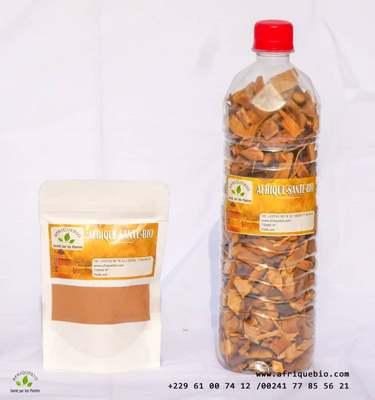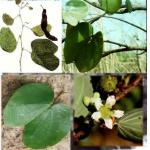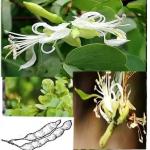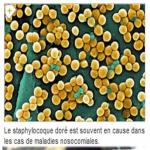Herbal Tea 430: Cyst Definition Causes Natural Treatment of a Cyst
Cyst Definition Causes Symptoms Natural Treatment of a Cyst: Here are the plants and natural remedies that remove cysts regardless of the nature of the cyst. My cyst disappeared thanks to one of these natural cyst remedies
50,00€ excl. tax - 50,00€ inc. tax
- Supplier : Afrique-bio.
- Manufacturer : Afrique-bio
Cyst Definition Causes Natural treatment of a cyst What is a cyst How many types of cysts are there When and how to know you have a cyst What causes a cyst Can -we treat cysts naturally How to treat a sebaceous cyst with a natural treatment Is a cyst fatal How to cure an ovarian cyst with natural remedies What is an ovarian cyst How to treat a synovial cyst thanks to natural remedies What is the best treatment for cyst How to treat cysts What is the plant that eliminates a dermoid cyst?
What is the plant that eliminates a dermoid cCyst?
Searches Related To Natural Cyst Treatment
Cyst Definition Causes Natural treatment of a cyst, What is a cyst, How many types of cysts are there, When and how to know you have a cyst, What causes a cyst, Can -we treat cysts naturally , How to treat a sebaceous cyst with a natural treatment , Is a cyst fatal, How to cure an ovarian cyst with natural remedies , What is an ovarian cyst,, How to treat a synovial cyst thanks to natural remedies , What is the best treatment for cyst, How to treat cysts , What is the plant that eliminates a dermoid cyst?
Cyst Definition Causes Natural Cyst Treatment
Cyst Definition
A cyst is an organic pocket containing a liquid, gas, fluid or solid. Any cell or organ can develop a cyst. This pocket, lump, or cyst often takes the shape of a small ball, ranging in size from one millimeter to several centimeters. The most common cysts form on the skin, in the joints, ovaries in women, testicles in men, kidneys, pancreas in both sexes. A cyst does not kill and never turns into cancer.
How many types of cysts are there?
Three types of cysts can appear under the skin. A cyst maybe:
squamous cell which is made up of the cells of the epidermis,
sebaceous which is formed by an accumulation of body fluid from the sebaceous glands,
pilonidal located above the intergluteal sulcus whose pocket contains skin debris
Dermoid if it contains organic tissue (bones, flesh fragments, teeth, hair, etc.)
synovial which is a cyst placed on the wrist or at the base of the fingers
popliteal cyst or Baker's cyst if it takes position behind the crease of the knee
functional
organic
What are the causes of a cyst?
A cyst or lump or pocket may be due to:
infection for most cysts on the skin after a bacterial, fungal or viral attack (staphylococci, streptococci, herpes virus…)
burns caused by prolonged exposure to UV rays,
organ dysfunction
unhealthy lifestyle: diet high in sugar and fat, tobacco consumption...,
trauma after a shock or contusion,
excessively repeated movements or a sedentary lifestyle,
benign or malignant tumor: cell dysfunction causing an accumulation of malformed tissue,
chronic inflammations such as a long-term pathology (rectocolitis, etc.),
poor healing: a faulty healing process,
accident
hereditary diseases: certain pathologies with a genetic impact can be the cause of certain cysts (autoimmune diseases, type 1 diabetes, etc.),
A presence of lithiasis: certain calculations (gallstones, liver or kidney) being favorable to the appearance of a cyst in the organ concerned
The cyst in women
In women, the cyst can affect the Bartholin gland, the main producer of the protective and lubricating fluid at the entrance to the vagina. The cyst may extend to the ovaries. In this case, it is manifested by the formation of a fluid-filled pocket on the surface or inside an ovary. This common problem often resolves without treatment after 2 or 3 menstrual cycles. Indeed, ovarian cysts are rarely cancerous before the age of 48.
The cervix is also prone to cysts. Generally, it results in the development of a pocket containing mucus. The latter forms precisely on the walls of the cervix is called Naboth's cyst or Naboth's egg. This form of cyst is without risk to health and mainly concerns women who have just given birth. Postmenopausal women can also be prone to it.
The cyst can also develop on the breasts. In this case, the latter is manifested by the formation of an oval or round substance consisting of mammary glands. Its size varies between 1 and 2 cm. Contrary to popular thought, the cyst that develops in the breasts is not a risk factor for breast cancer.
The cyst in men
In men, the kidney cyst can be solitary and cause complications. The latter can also occur following a hereditary anomaly that can cause kidney failure. When it grows in the pancreas, the cyst can become cancerous.
The epididymis is also a common place where a cyst appears. We are talking about a sperm cyst. Although this is manifested by the formation of a small pocket in the channel that carries sperm, it does not affect fertility or sexuality.
Can cysts be treated naturally?
Since a cyst is usually asymptomatic, their existence often goes unnoticed. However, an embarrassing and unsightly lump may form on the skin. To soothe these pockets and prevent their inflammation, you can opt for natural remedies like:
Naturopathy: Green clay. To learn more about the benefits of naturopathy, see our article on this method.
Aloe vera, an analgesic and bactericidal plant that is frequently used in aesthetic care or to treat skin conditions. In the presence of a cyst, cut the leaf in half and spread the sap on the skin at least twice a day. If the cyst was formed due to toxins, it will disappear after some time.
Curly sorrel is a medicinal plant used to eliminate toxins in the blood. For its preparation, it is advisable to boil a handful of sorrel root in a liter of water, bring the mixture to a boil for 20 minutes, strain and drink up to 4 cups a day.
Mallow whose warm poultice can be applied to the affected area. It calms redness, inflammation and also eliminates pathogens.
Apple cider vinegar which is known for the benefits of the bacteria it contains. This regulates the pH of the skin and eliminates toxins. It remains a good alternative to treat cysts and can be applied several times a day with the help of a cotton ball on the affected area.
Tea Tree Essential Oil: This product contains broad-spectrum antibacterial molecules. Apply three drops of the product to the cyst daily.
How to cure a sebaceous cyst with a natural treatment?
Green clay has properties that can remedy sebaceous cysts because it absorbs sebum. The sebum is drained and no longer accumulates in the skin.
The effect of Rubus Ideaus, a raspberry glycerine macerate, seems to regulate hormonal disorders in women.
The sebaceous cyst is caused by hormonal disorders, taking this remedy at the rate of 10 drops in two doses for 4 days after menstruation can treat it.
Homeopathic remedies like Hepar sulfur 5 CH can also cure the sebaceous cyst which is accompanied by pain. Taking 3 granules in the morning is recommended for treatment.
How to cure an ovarian cyst with natural remedies?
Follicular cysts account for 90% of reported cyst cases. Hormonal imbalances in women and health problems that lead to the accumulation of follicles can cause an ovarian cyst of a follicular nature.
Tea tree essential oil, in addition to having antibacterial properties, also acts on female hormonal secretion. This helps to regulate the disorders that are the cause of cysts. However, the cause of the encystment must be clearly identified. If the latter results from toxins, apple cider vinegar, tea tree essential oil, mallow and aloe vera are the appropriate remedies.
It is recommended to consult a doctor in order to seek his opinion on the natural products that can be associated with the treatment of the cyst or its removal.
How to treat a synovial cyst with natural remedies?
You can apply an arnica-based cream to the painful area. This helps to calm the pain caused by the cyst, but without completely curing it. It is also possible to apply cold to the cyst, this has the effect of alleviating the pain and reducing the swelling.
Remember to apply ice cubes on the painful part. You can even do it several times a day. You can also use green clay as a poultice to treat a synovial cyst. Green clay has draining properties, and helps drain sebum and certain toxins.
A synergy of essential oil used in cutaneous application can also relieve the pain caused by a cyst and regress it. It can be a mixture of pistachio mastic tree, eucalyptus or peppermint essential oil. This formula combines anti-inflammatory, draining and anti-rheumatic properties that strengthen the joints, while reducing synovium secretion.
Homeopathic remedies are also effective in treating synovial cysts. Take 3 granules of Sticta Pulmonaria 4 CH three times a day and accompany the treatment with a dose of Silicea 15 CH per week. You can take Calcarea Fluorica 9 CH or Calcarea Carbonica instead of Silica.
Certain herbs that have draining properties can also cure a cyst, including:
Dandelion
Burdock
Black tea and more
How to treat cysts?
In most cases, a cyst does not require treatment, its appearance and development being generally not serious. Often, no medication is prescribed, as the pocket goes away on its own after a few days.
However, some cases require treatment, especially if discomfort or pain is observed. Specific treatment is also recommended if there is a risk of developing other diseases such as cancer. The treatment chosen by the doctor depends on several parameters, including the location of the cyst and its size.
If it is an apparent and easily accessible cyst, the doctor can make a small incision to quickly drain the contents of the pocket. This method requires no anesthesia.
If the cysts are causing pain, the doctor may recommend applying warm compresses. The latter can also offer analgesics and sedatives depending on the condition of the person concerned when the pain intensifies.
If the cyst is deep like in the knee, the use of the puncture technique is unavoidable. This remains the best way to overcome the cavity. Your doctor may also give a cortisone injection to reduce inflammation.
When cysts affect the joints, medical professionals rarely opt for surgery. This option actually increases the risk of aggravation.
Surgical treatment of cysts remains relatively rare. Other treatments are often more effective in solving the problems caused by these cavities. However, it is possible that the removal of the organ where the cyst is located is necessary (oophorectomy, hysterectomy).
What is the Social Security coverage?
The majority of existing cysts are not listed as Long-Lasting Conditions. Their processing does not lead to an exemption from the co-payment. But, if the presence of a specific cyst leads to prolonged disability, an application for a disability compensation benefit is still possible.
If surgery to remove a cyst is for cosmetic purposes, it will not be covered. On the other hand, if it is a medical necessity, Social Security reimburses part of the expenses.
Mutual health insurance and coverage of your costs related to the treatment of cysts
Whether it is natural treatment, medication or surgery, treating a cyst involves additional expense. However, health insurance only covers part of the costs. In order to minimize your out-of-pocket costs, reinforce your health cover with additional guarantees.
Health mutuals also offer you additional reimbursement for consultations, medical treatments, natural curative and preventive care, surgical procedures, etc. You can then benefit from a partial or total reimbursement of your expenses depending on the formula chosen.
To discover the most advantageous and least expensive warranties, compare the offers available on the market for free
Please reach us at http://wa.me//+22967546677
Click below to order clove oil
Book an appointment with lady feranmi on
Add a comment









